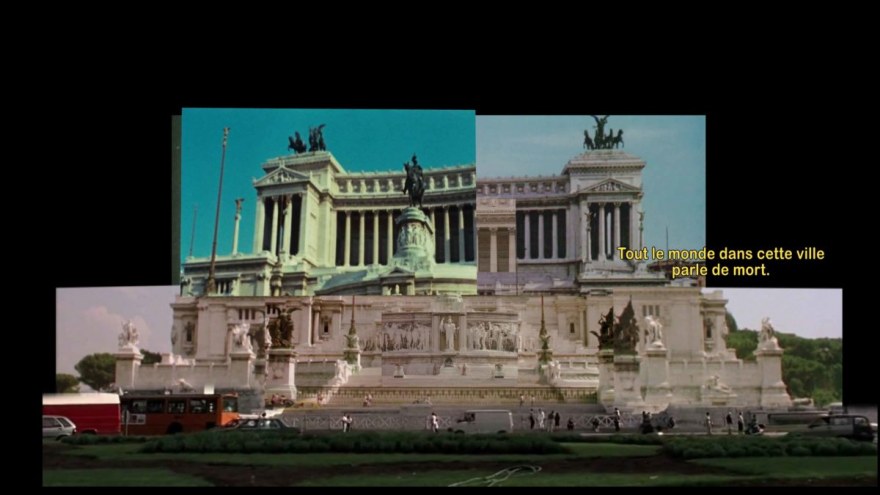Dinner with L’espace commun [Common Space]
Interview with Raphaële Bezin, director of L’espace commun [Common Space]
How many films did you watch in order to get the sequences you used in L’espace commun?
I must have seen about 120, but I only used 28 in the end.
What interested you about the principle of composition for the images?
I initially wanted the different visions of Rome to face off. Each filmmaker offers his or her version of the city and the compositions I made juxtapose those versions and allow the viewer to compare them. But the films also turned out to be genuine archival documents of the city of Rome. They allowed me to take stock of its architectural and urban evolution through sixty years of film. What interested me was to make different times coexist in the same place.
What idea did you have for the text that accompanies the film and why did you want to put it on the images rather than have it spoken by the actors?
I conducted a batch of interviews with Romans. I asked them to tell me about the connection their city had with films. And it’s from those interviews that I made the “off-camera” voices in my film. I wanted to depersonalize the remarks. Neither a man’s nor a woman’s, nor an Italian’s nor a French person’s. So writing them became the best way to leave the viewer with the task of imagining a voice for the text. With respect to the dialogues already present in the film clips, I left them as I found them in subtitles to the films I saw.
You speak of composition based on “ruins”. Did you choose video clips that contributed to the composition based on the scenes that you thought you remembered, long after seeing a film?
No, I didn’t choose the clips based on my personal memory but based on the collective memory comprised of all the films shot in Rome. If the city disappeared one day and someone tried to reconstruct it based on the films that have used it as a backdrop, what would it look like? That’s what I meant by “ruins” – the work of digging and reconstructing that mirrors the work of archeologists.
Besides the animation and the text on the screen, did you add anything? Did you add scenes that you and your team filmed?
We did not shoot any images for the film. And I personally undertook all of the animation. The only thing that was added is the soundtrack. While a few elements were recorded in Rome, the bulk was done in the studio by Homéro Gonzalez and Andrés Padilla Domene.
Can you see yourself making other films using the same principle of composition, for other cities?
The principle of composition, the collage, is pretty typical of my artistic practice. I don’t think I’ll be going away from it any time soon. But it’s the notion of territory that currently interests me, more than any specific city. How are territories fictionalized? How are they represented visually and to what end?
Have you discovered any advantages that the short film form provides?
Each of the compositions I made for this film contain a great deal of information. I’m asking a great deal of the viewer’s visual attention. I think that would have been impossible to ask in a feature film.
L’espace commun is part of Lab Competition L1.









